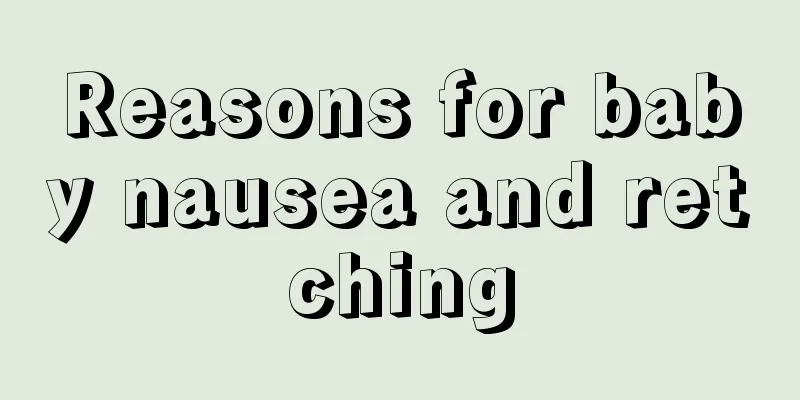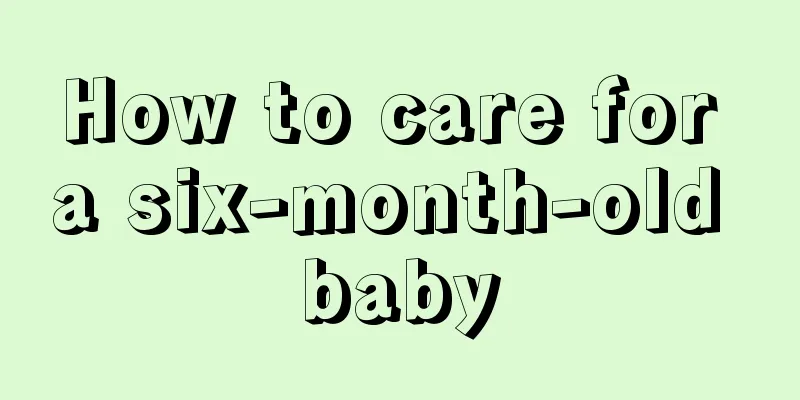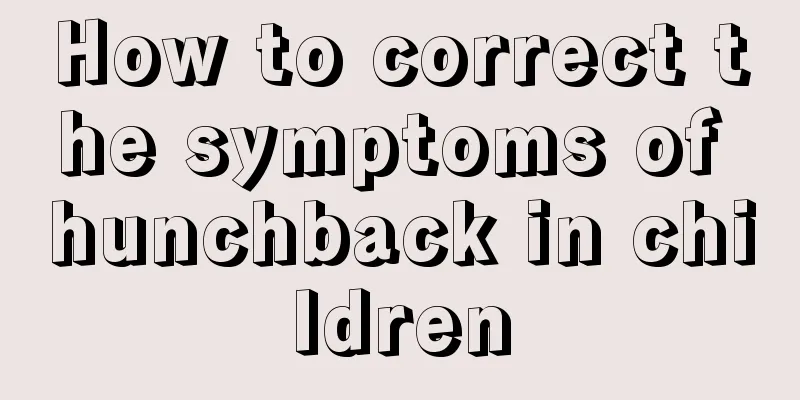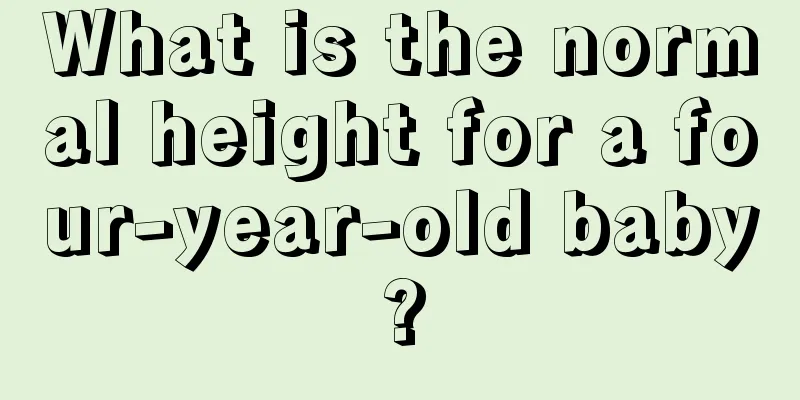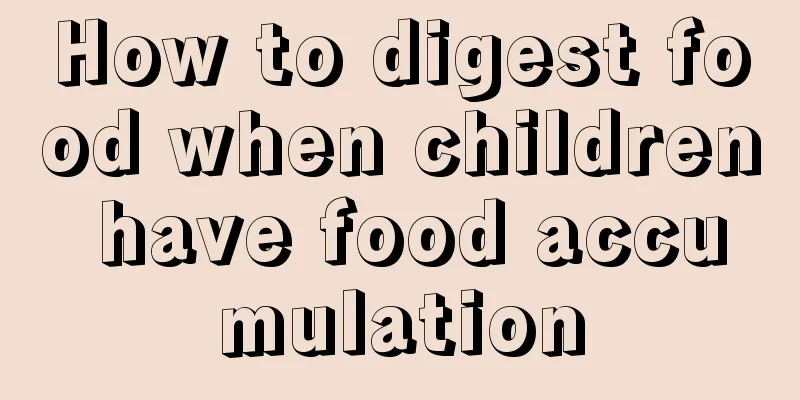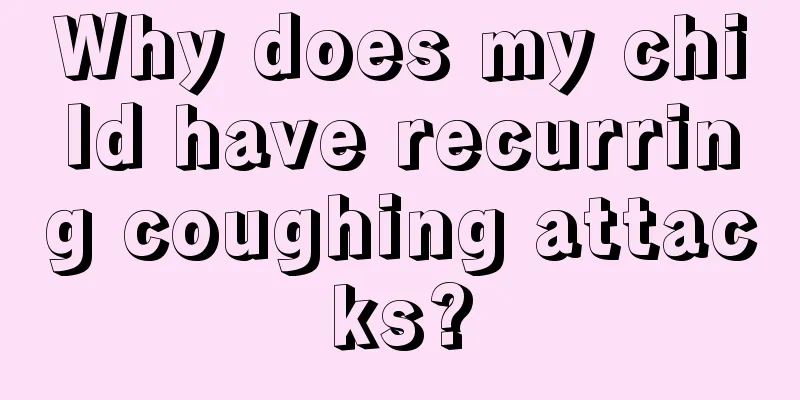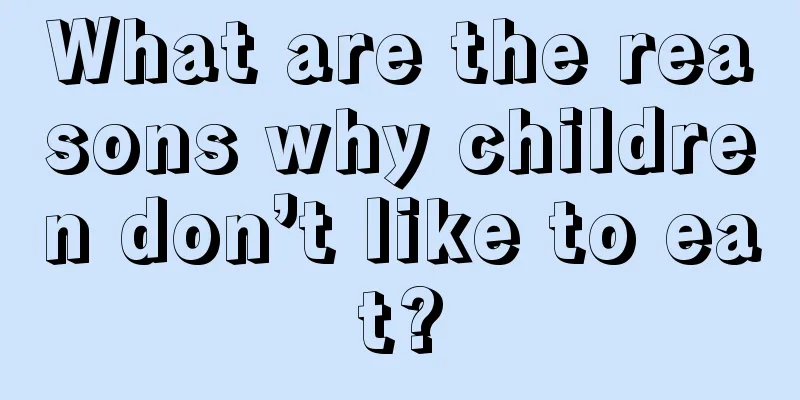Children have convulsions due to fever. Do you know what is going on?

|
Everyone knows that it is very dangerous for children to have a fever. It can easily cause a variety of diseases and may even cause irreversible damage. Some children may experience convulsions when they have a fever. This means that the fever is very serious and we must find a solution in time. 1. Causes of fever and convulsions in children Children's fever and convulsions are medically called febrile seizures. This is mainly due to the imperfect development of the nervous system of infants and young children, such as poor inhibitory function of the cerebral cortex and incomplete formation of the nerve myelin sheath. Once stimulated by external stimuli, the excitement can easily spread and cause convulsions. Generally speaking, infants and young children between 6 months and 4 years old, especially those who often catch colds and fevers, are more likely to suffer from febrile convulsions. Convulsions usually occur when the baby has a high fever, such as a body temperature of 39℃-40℃, and last for a relatively short time, about 2-3 minutes, and generally do not exceed 10 minutes. After the convulsion stopped, the child woke up. Clinically, children's fever convulsions (febrile seizures) are divided into simple febrile seizures and complex febrile seizures. 1. Simple febrile convulsion. It is more common in children with good physique between 6 months and 3 years old. The convulsion is systemic and lasts for several seconds to several minutes, usually not more than 10 minutes. It only occurs once a day. The child wakes up quickly after the convulsion and becomes drowsy after regaining consciousness, but there is no abnormality in the nervous system. The EEG results within two weeks of the convulsion are normal. 2. Complex febrile seizures. It is more common in children under six months old or over 4 years old. They have multiple seizures in a day, lasting more than 15 minutes, and have more than 4 high fever convulsions. A few people have non-systemic seizures, but partial seizures (such as unilateral limb convulsions). After the attack, there are neurological abnormalities such as temporary paralysis. 2. Symptoms of fever and convulsions in children Children's fever convulsions mainly manifest as whole-body or local muscle convulsions shortly after the onset of high fever (body temperature above 39°C) or when the body temperature rises suddenly, with eyeballs staring, squinting, straightening or rolling up, accompanied by loss of consciousness. Breathing may stop for 1-2 minutes. In severe cases, the lips may turn blue, and incontinence may sometimes occur. Therefore, once parents find that their baby has symptoms of fever and convulsions, it is best to let the baby lie flat on the bed first to ensure that he will not touch any sharp, sharp or hard objects. In addition, physical cooling is required. You can place cold towels on the baby's forehead, palms, and thighs to help lower the body temperature. If the convulsions do not stop, you should go to the hospital immediately. 3. Prevention of fever and convulsions in children To prevent children from having fever and convulsions, we must first improve the baby's immunity. This can be done by strengthening nutrition and engaging in regular outdoor activities to strengthen the baby's physical fitness and improve resistance. If necessary, use some drugs to enhance immunity under the guidance of a doctor. Secondly, we should prevent colds. When the weather changes, add or remove clothes as appropriate to avoid catching cold; try not to go to public places or places with a large number of mobile populations, such as supermarkets, stations, cinemas, etc., to avoid catching a cold; if an adult in the family has a cold, they need to wear a mask and have as little contact with the baby as possible; open windows for ventilation at irregular intervals every day to keep the air circulating in the home. Parents should also detect their child’s fever as early as possible. Babies have fever frequently during infancy, so parents should pay more attention, especially to the night care of babies with fever, because most of the time, the baby's body temperature rises suddenly at night. If the baby has a high fever, parents should actively help him or her reduce the fever. There are two ways to reduce fever: one is physical cooling; the other is drug cooling. Physical cooling includes: 1. Warm water bath: The water temperature should be slightly higher than body temperature. Mainly use it to wash the palms, soles, armpits, popliteal fossa, groin, etc. of the child. However, the time should be short to prevent cold again and aggravate the condition. 2. Warm water bath: The water temperature should be about 3-4℃ lower than the child's body temperature, and each bath should last for 5-10 minutes. Many parents believe that children should not be bathed when they have a fever. In fact, on the contrary, giving the baby a warm bath can help cool the baby down. A warm bath is suitable for all babies with a fever. If you use medication to reduce fever, be sure to use it under the guidance of a professional doctor. |
<<: What are the white spots on my child’s fingernails?
>>: What should I do if my child has a cold and refuses to eat?
Recommend
What are the symptoms of hypoglycemia in children?
Some children suffer from hypoglycemia. It should...
Why does the baby vomit when switching from breast milk to formula?
Mother’s breast milk is very important to the bab...
Why does my child keep farting?
Some parents reported that their 15-year-old chil...
Foods that boost your baby's immunity
In fact, many times parents simply don’t have tim...
The baby can't lift his head at two months old
Anyone who has held a newborn baby will know that...
What will happen if a child drinks expired milk?
Some manufacturers nowadays really have no morals...
What are the dangers of children eating too much salt?
Parents must be very cautious when adding salt wh...
What to do if your baby has flatulence and constipation
Because the baby is still relatively young and th...
Eight-month-old baby has a fever of 38 degrees
When a baby has symptoms of fever, it is necessar...
What is the cause of the red bloodshot eyes?
The importance of eyes is self-evident. In daily ...
What to do if small red pimples appear on the face of a child
Babies have low resistance and are easily invaded...
How to treat a baby who wakes up suddenly while sleeping
The birth of every new life will make our parents...
Baby eating milk powder without pooping
Many new parents have no idea how to take care of...
Methods of TCM health care for children
We all know that every child grows and develops v...
Why do I want to sleep during class?
For students, paying full attention in class is a...
